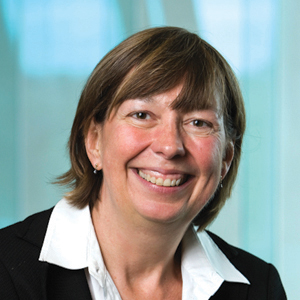Unmotivated, resistant to change, not good with technology… in a society obsessed with staying young, it’s easy to come up with stereotypes of older workers.
With the Australian retirement age set to rise to 70 by 2035, anyone currently aged 50 and under is now bracing for the likelihood that they too will soon be an ‘older worker’.
The Federal Government’s recently released Intergenerational Report states that encouraging higher workforce participation will be critical to driving economic growth – emphasising the need to tap into the economic potential of older workers to ensure the future prosperity of the nation.
But while the government wants to encourage seniors to stay employed, Age Discrimination Commissioner Susan Ryan has released a report showing discrimination is discouraging older workers from remaining in the workforce.
Reports show older workers are often the butt of ageist jokes, are being threatened with redundancy because of their age, and face a lack of flexibility at a time when many have elderly parents to care for.
Does encouraging older people to stay in the workforce mean we are facing the prospect of 9-5 until we’re 95?
Experts agree that not only are people going to be working for longer, but to accommodate the new reality we urgently need to redesign our systems.
 Research Professor Carol Kulik says the statistics show all too clearly why we can’t afford to stick our heads in the sand.
Research Professor Carol Kulik says the statistics show all too clearly why we can’t afford to stick our heads in the sand.
Prof Kulik, who is based in UniSA’s Centre for Human Resource Management, says when Australia introduced an age pension in 1909, only four per cent of the population lived long enough to qualify for it.
“In the early 1900s, there were 15 working age people to support every one person aged over 65. Today, there are five. And by 2050 there will be less than three. The current system is just not sustainable,” she says.
Prof Kulik says while much of the debate focuses on keeping older workers on the job, the real challenge is keeping people engaged, productive and happy while they’re there.
She says stereotypes – that older workers are low performers, have crabby or grumpy dispositions and are resistant to change – are a major problem. Much of her research focuses on stereotype threat, which describes the psychological experience of someone who is aware that other people hold negative stereotypes about them.
“It’s easy to come up with stereotypes of older workers and those stereotypes are not necessarily true, but older workers know what those stereotypes are,” she says.
“We’re interested in this idea that work environments can send very negative signals to older workers that act to disengage them, lower their motivation and lower their performance.”
Prof Kulik’s research shows good human resource practices for all staff – such as investment in employee training – carry some weight in improving the experience of older workers. However, human resources practices specific to older workers have a much stronger effect.
“Organisations that offer incentives to mature age workers to mentor or be mentored, opportunities to upgrade their skills and remain current, opportunities to take on challenging roles, and feature older workers in very visible positions – these practices have a really positive effect because they demonstrate people are valued not just as employees but as a member of that demographic group,” she says.
“There are things organisations can do which are good for their entire workforce, and then there are things they can do in addition to specifically target this group.
“Unfortunately organisations aren’t doing it. The older workers in our study reported they didn’t see a lot of these practices and did not feel valued.”
 Centre colleague Dr Sanjee Perera says workplace flexibility arrangements are not meeting the needs of older workers – and the ‘no’ response to flexibility requests can push many out of the workforce.
Centre colleague Dr Sanjee Perera says workplace flexibility arrangements are not meeting the needs of older workers – and the ‘no’ response to flexibility requests can push many out of the workforce.
“A bit like a young person might take a gap year to Europe, older people might want to take an extended period of time off to travel,” Dr Perera says.
“They request that break to travel, to refresh and also to help to cope with work intensification. For older workers to really be accommodated in the workplace, flexibility needs to be an option for everyone – not just specific groups.”
Dr Perera and Prof Kulik say many mature workers want to work part-time because they have elderly parents to care for, but organisations which pride themselves on being flexible for those with young families aren’t necessarily catering to flexibility requests from anyone else.
“An organisation’s website might talk about offering flexibility to staff, but is covered with images of young people… that organisation is inadvertently sending negative signals to older workers,” Prof Kulik says.
“Organisations are usually careful about including gender and cultural diversity, but age diversity is often overlooked. People need to be able to see themselves in the system.”
 Dean and Head of the School of Law, Professor Wendy Lacey advocates the rights of older people and says the idea that we have to stop working at a certain age is, quite simply, ageist.
Dean and Head of the School of Law, Professor Wendy Lacey advocates the rights of older people and says the idea that we have to stop working at a certain age is, quite simply, ageist.
“The ageism that underpins the notion that we should all retire at a certain age is such an outdated concept. We should be able to work for as long as we like,” she says.
“Research has shown that the more engaged you are with your community, the better health outcomes and better life experience you have in older age. Work can be a really positive thing in terms of maintaining connectivity and avoiding social isolation, which can lead to vulnerability.
“Ageist assumptions are getting in the way of any proper appreciation of the massive resource and wisdom of older people in the workplace.
“We need to flip it on its head and not think of the issue from a paternalistic point of view but think of the benefits we’d reap, both for the individual and for society, by fostering and encouraging engagement with work and other social communities.”
Prof Lacey points to work from former South Australian Thinker in Residence Alexandre Kalache on the ‘longevity revolution’.
“It’s not about getting sick and disengaging, it’s about the second adolescence, or ‘gerontolesence’ as Kalache calls it, and the idea that life is full,” Prof Lacey says.
“Consider older people and technology. The uptake of technology among older people is much greater than we expect. Every generation will be more technologically advanced but it doesn’t mean an old dog can’t learn new tricks, because you can, absolutely.”
 Adjunct Emeritus Professor with UniSA’s Business School, Barbara Pocock, who has spent decades researching the work/life interface, says the ageing population poses many challenges in the workplace, as well as the health system and beyond.
Adjunct Emeritus Professor with UniSA’s Business School, Barbara Pocock, who has spent decades researching the work/life interface, says the ageing population poses many challenges in the workplace, as well as the health system and beyond.
“There are significant differences in the relative circumstances of the rich and poor and between men and women,” Prof Pocock says.
“For example, under existing superannuation arrangements, men have almost twice as much superannuation as women.
“Governments in other countries have dealt with such gender-based differences through policy changes that better recognise the care responsibilities of women.
“Coming decades will see a range of challenges for governments and employers as the consequences of the great demographic shift already underway come home to roost.”
If older Australians are successfully able to continue to work into their 70s, there needs to be a widespread shift in thinking; stereotypes need to be abandoned, workplace policies need to truly embrace flexibility, and human resource frameworks need to include targeted strategies to engage changing demographics. If society can manage this shift, the economy and society as a whole could benefit from not declaring older workers out.
Connect with the Centre for Human Resource Management: @UniSACHRM
Connect with Professor Barbara Pocock: @BarbaraPocock
Find out more at the Centre for Human Resource Management website.